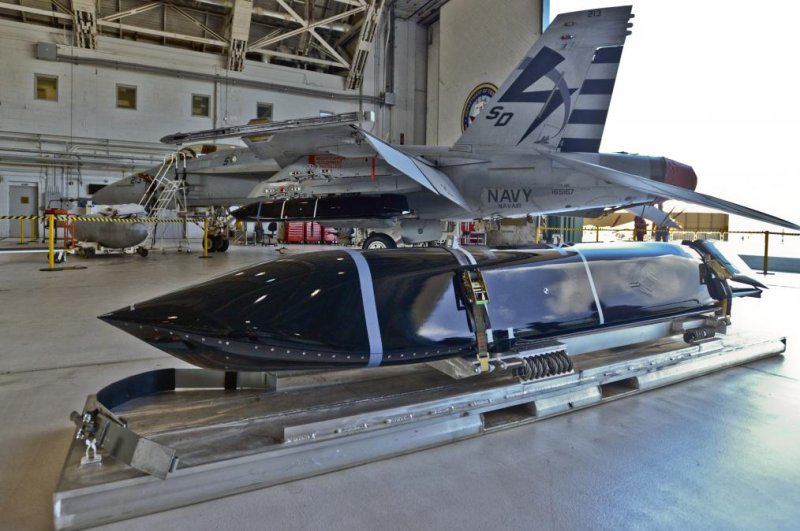A Long Range Anti-Ship Missile is prepared for mounting on a F/A-18 Super Hornet fighter. Photo courtesy of Naval Air Station Patuxent River/U.S. Navy
Nov. 16 (UPI) -- The Air Force has issued a $172 million contract for Lot 2 production of Long Range Anti-Ship Missiles from Lockheed Martin.
The order, announced Thursday by the Department of Defense, provides for the production of 50 LRASMs with an estimated completion date of December 2021. The manufacturing and assembly will take place at the Lockheed Martin facility in Orlando, Fla.
The LRASM is currently under development and testing by the U.S. Air Force and Navy. It is based off of the Joint Air to Surface Standoff Missile Extended Range cruise missile currently in service. Like the JASSM, it has a semi-stealth airframe making it difficult for enemy radar and weapons to detect and track.
LRASM has multi-modal sensors and a GPS guidance system designed to be resistant to enemy jamming. It is capable of detecting and selecting pre-programmed enemy vessels out of groups of ships without outside guidance, providing greater standoff ranges in excess of 230 miles outside of friendly sensor networks.
It is currently being integrated with the B-1B Lancer strategic bomber and F/A-18E/F Super Hornet for air launched missions and the Mk 41 Vertical Launch System used on U.S. and allied ships for surface-to-air and land attack missiles. It is expected to be mounted on Virginia-class nuclear attack submarines, in addition to the vessel's normal complement of Tomahawk land-attack cruise missiles.
The LRASM was expected to be operational on the B-1B Lancer strategic bomber this year, but software issues have lead to a delay. The Air Force is considering mounting it on B-52H heavy bombers as well.
The LRASM is planned to be integrated with the F/A-18 Super Hornet sometime in 2019 and versions compatible with the incoming F-35 are expected within the next several years.
The missile is anticipated to fill a gap in long range anti-ship capability for the U.S. military, which still relies on the 70's era Harpoon missile that has a much shorter range.















